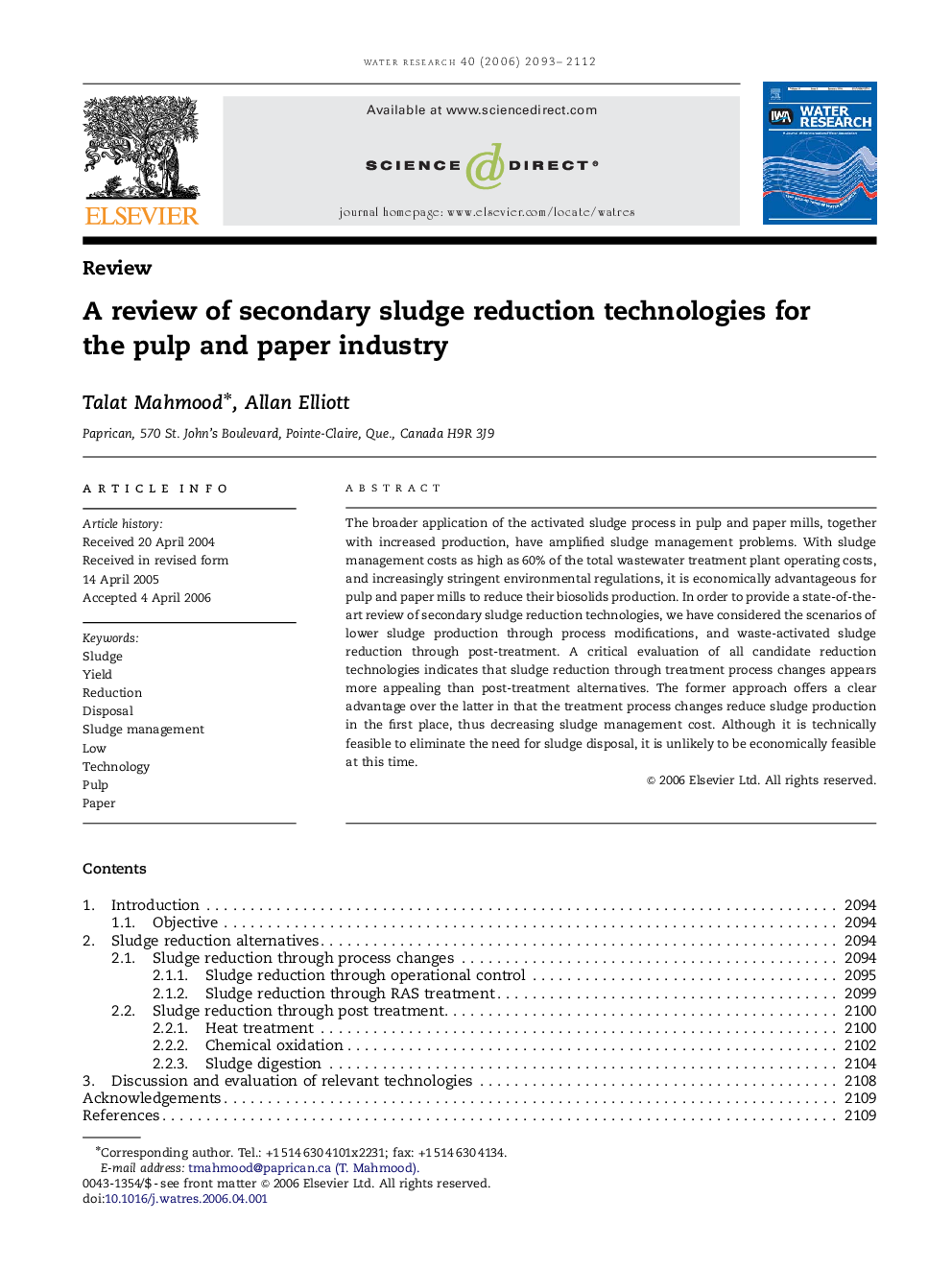| Article ID | Journal | Published Year | Pages | File Type |
|---|---|---|---|---|
| 4485875 | Water Research | 2006 | 20 Pages |
The broader application of the activated sludge process in pulp and paper mills, together with increased production, have amplified sludge management problems. With sludge management costs as high as 60% of the total wastewater treatment plant operating costs, and increasingly stringent environmental regulations, it is economically advantageous for pulp and paper mills to reduce their biosolids production. In order to provide a state-of-the-art review of secondary sludge reduction technologies, we have considered the scenarios of lower sludge production through process modifications, and waste-activated sludge reduction through post-treatment. A critical evaluation of all candidate reduction technologies indicates that sludge reduction through treatment process changes appears more appealing than post-treatment alternatives. The former approach offers a clear advantage over the latter in that the treatment process changes reduce sludge production in the first place, thus decreasing sludge management cost. Although it is technically feasible to eliminate the need for sludge disposal, it is unlikely to be economically feasible at this time.
